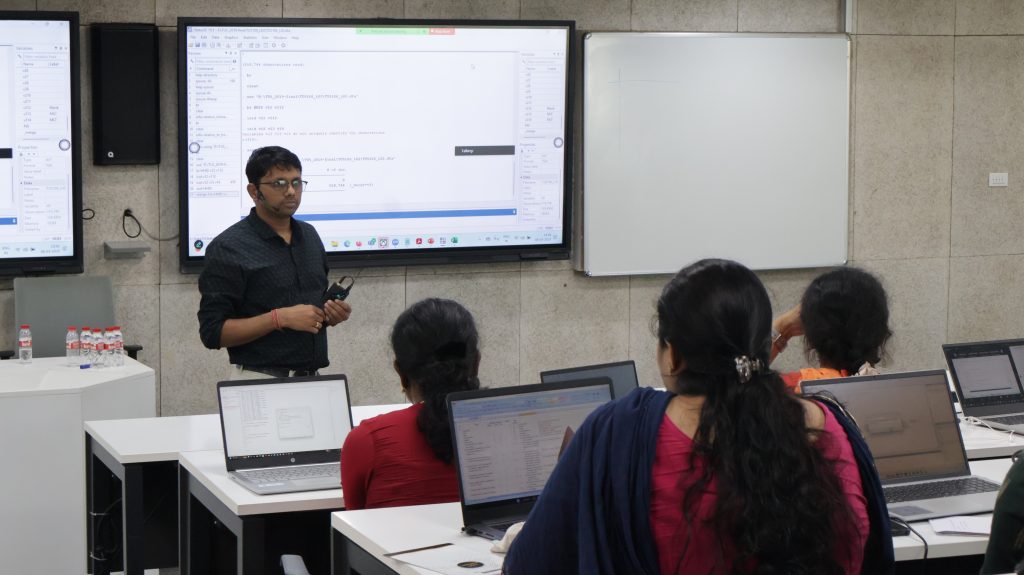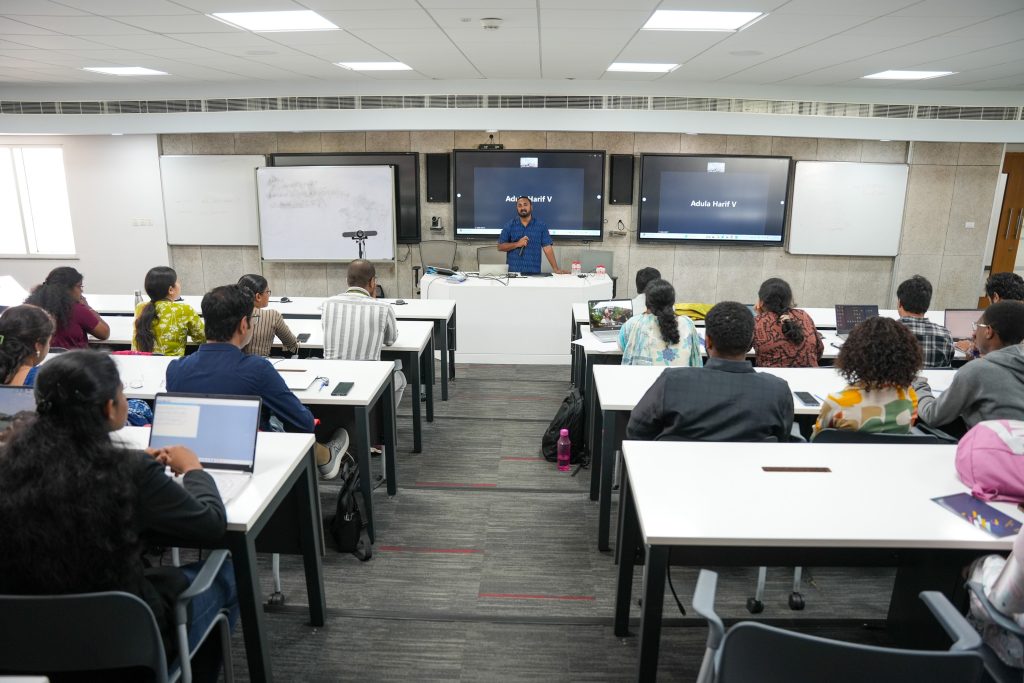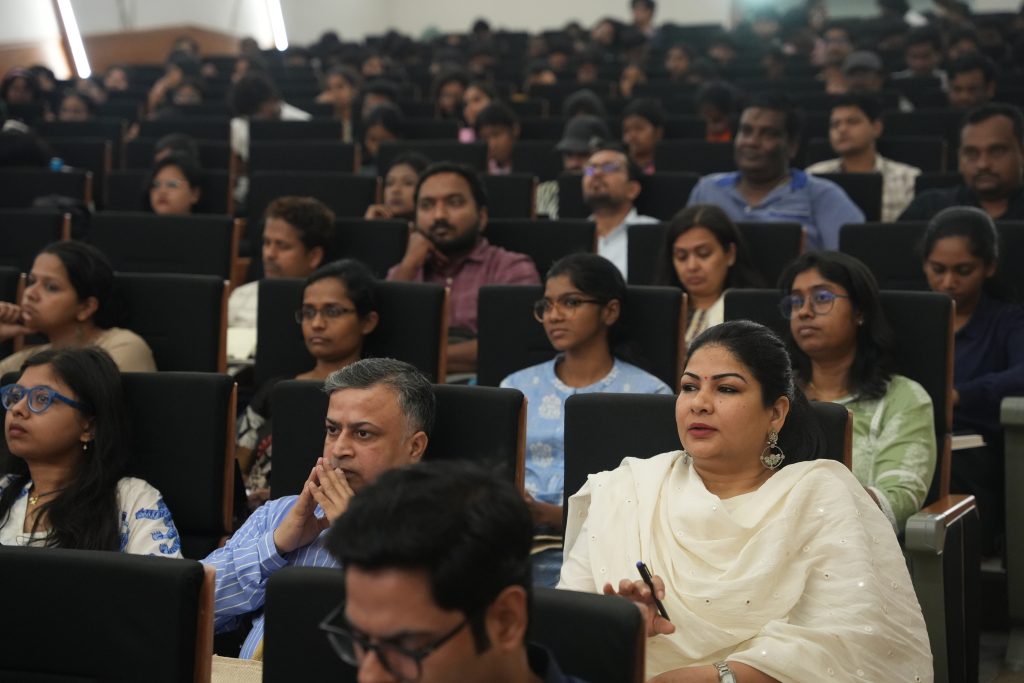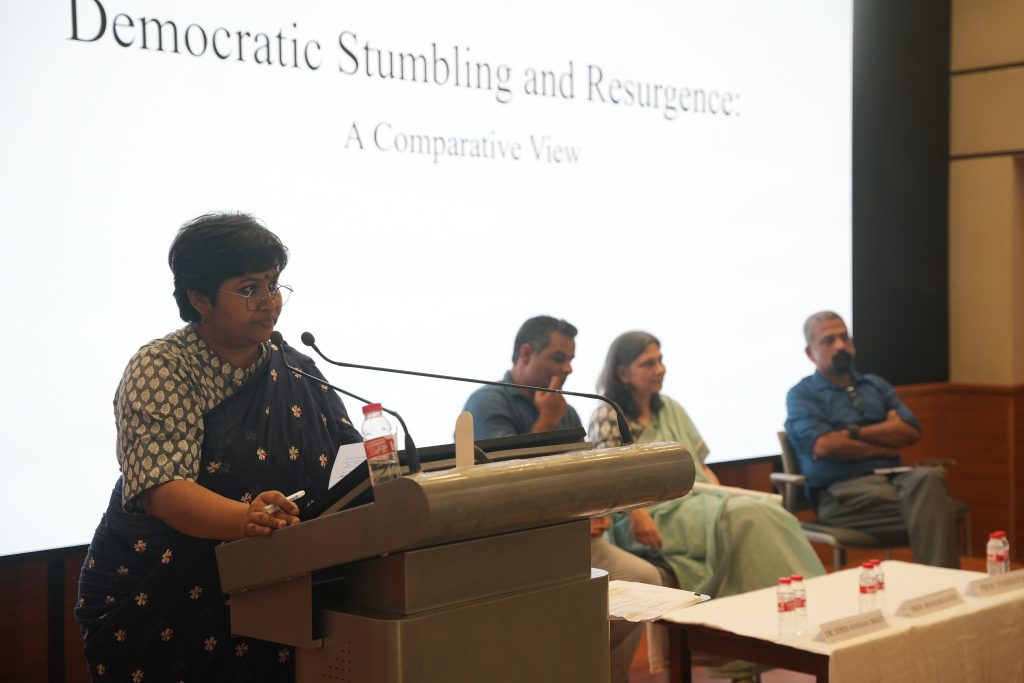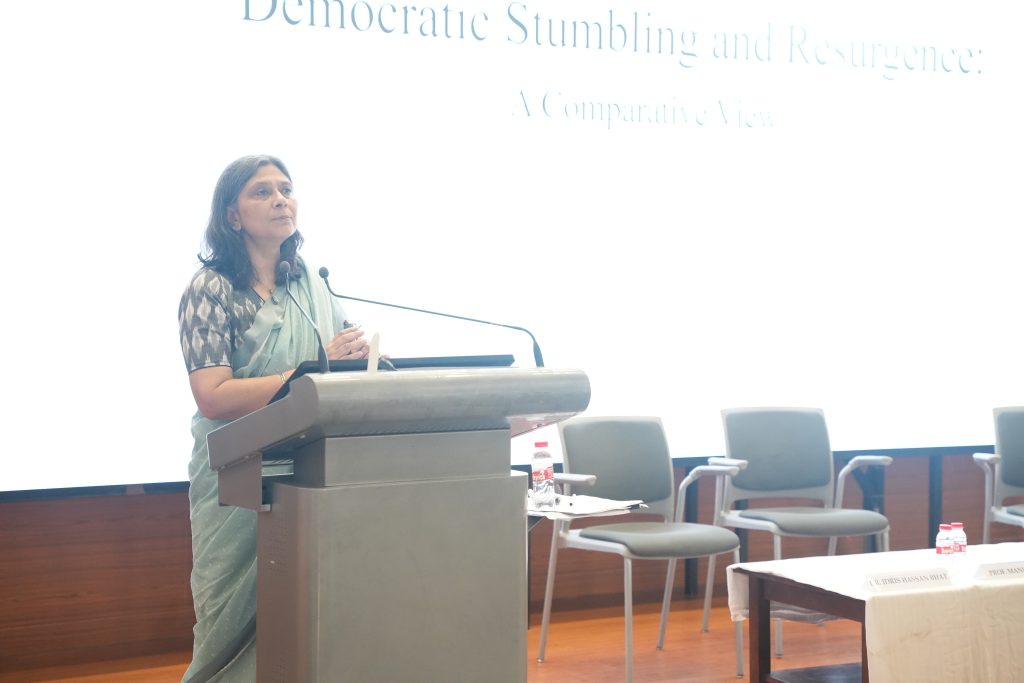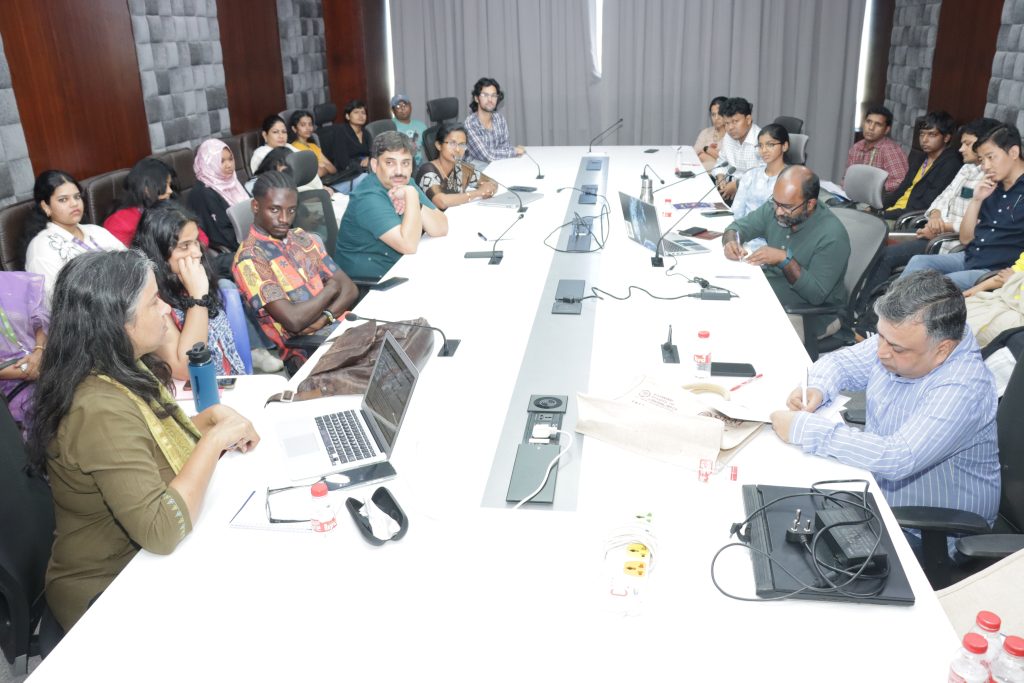- Industrial Visit to Reliance Industries-KGD6 Oil & Gas March 27, 2025
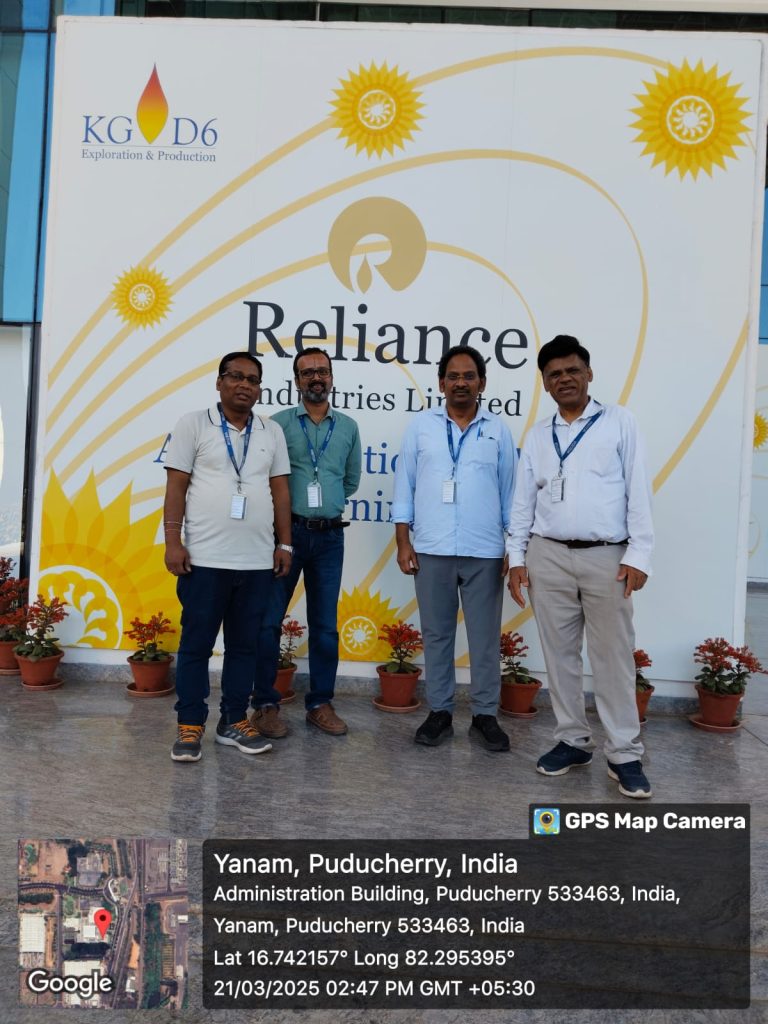
The Department of Mechanical Engineering under the School of Engineering and Sciences at SRM University-AP, organised an industrial visit on March 22, 2025 to Reliance Industries – KGD6 Oil & Gas, Andhra Pradesh.
The Industrial visit helped enhance the practical knowledge and industry exposure of the B.Tech & M.Tech students in the field of oil and gas extraction and learn first-hand the sustainable practices followed in the industry. The visit aligned with the students academic curriculum and prepared them for a future in the energy sector.
The visit was led by faculties, Dr Gurumurthy Kagita, Prof. Prakash Jadhav, Dr Satya Pramod Jammy, Dr Chandan Kumar, and Dr Supen Kumar Sah from the Department of Mechanical Engineering, who accompanied the students throughout the visit. During the visit, students gained insights of operational aspects of oil and gas industries, offshore and onshore adopted technologies, pollution control strategies, real-time monitoring, automation, control systems used in oil and gas operations and environmental management techniques. Experts from Reliance Industries-KGD6 Oil & Gas explained advanced drilling techniques, offshore and onshore extraction processes, and storage techniques of natural gases to our students. The visit also provided insights into safety protocols, automation in industrial processes and sustainability practices in the Oil & Gas industry.
The visit was highly beneficial for students as it bridged the gap between theoretical knowledge and real-world applications. It also offered an opportunity to interact with industry professionals and understand the challenges in oil and gas industries.
Continue reading → - Two-Day Workshop on Applied Econometrics & Its Applications in STATA and R March 27, 2025
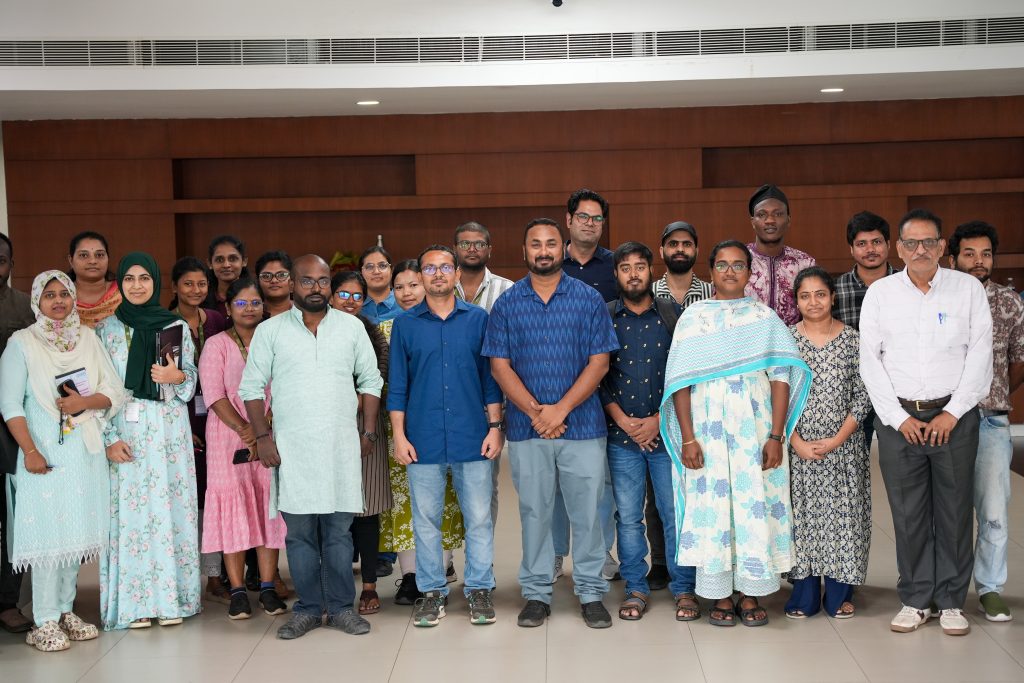
The Department of Economics at Easwari School of Liberal Arts successfully organised a two-day workshop titled “Applied Econometrics: Leveraging with Software and Databases” on March 7 – 8, 2025. The workshop witnessed the participation of approximately 40 attendees, comprising academicians, research scholars, and students from various institutions, including SRM IST, VIT-AP and Amrita University. The significant turnout reflected the keen interest in applied econometrics and the practical implementation of statistical software (R and STATA) for economic analysis.
The primary objective of the workshop was to provide a comprehensive understanding of econometric principles while emphasising hands-on training with statistical software such as STATA and R. Participants received practical exposure to key econometric techniques, including time series modelling, cross-sectional data analysis, and panel data estimation, thereby enhancing their empirical research capabilities.
The workshop featured four insightful sessions conducted by distinguished experts in the field of econometrics:
- Dr Anandarao Suvvari (IIT Goa) – Delivered an in-depth session on fundamental econometric techniques and their applications in STATA and R.
- Dr Mohan Rao Balaga (IIT Dharwad) – Provided a comprehensive analysis of time series methodologies, covering ARIMA, VECM, VAR, and ARDL models using macroeconomic and financial datasets.
- Dr Pratap C Mohanty (IIT Roorkee) – Delivered a session on cross-sectional data techniques, encompassing linear and non-linear models, instrumental variable (IV) estimation, and applications utilizing NSSO and large-scale survey data.
- Dr Vineesh Prakash (SRM University-AP) – Conducted an extensive session on panel data models, discussing Fixed Effects (FE), Random Effects (RE), Generalized Method of Moments (GMM), and dynamic panel models using CMIE ProwessIQ data.
The interactive nature of the sessions enabled participants to engage with the resource persons, deliberate on real-world econometric applications, and undertake practical case studies utilizing empirical datasets. The rigorous discussions and hands-on exercises significantly contributed to a deeper understanding of applied econometrics.
This two-day workshop proved an enriching academic initiative, equipping participants with essential econometric skills and strengthening their analytical capabilities in economic and financial data analysis. The positive feedback from attendees underscored the effectiveness of the workshop particularly in integrating theoretical knowledge with hands-on implementation.
Continue reading → - Patent to Boost Health and Safety Protocols March 26, 2025
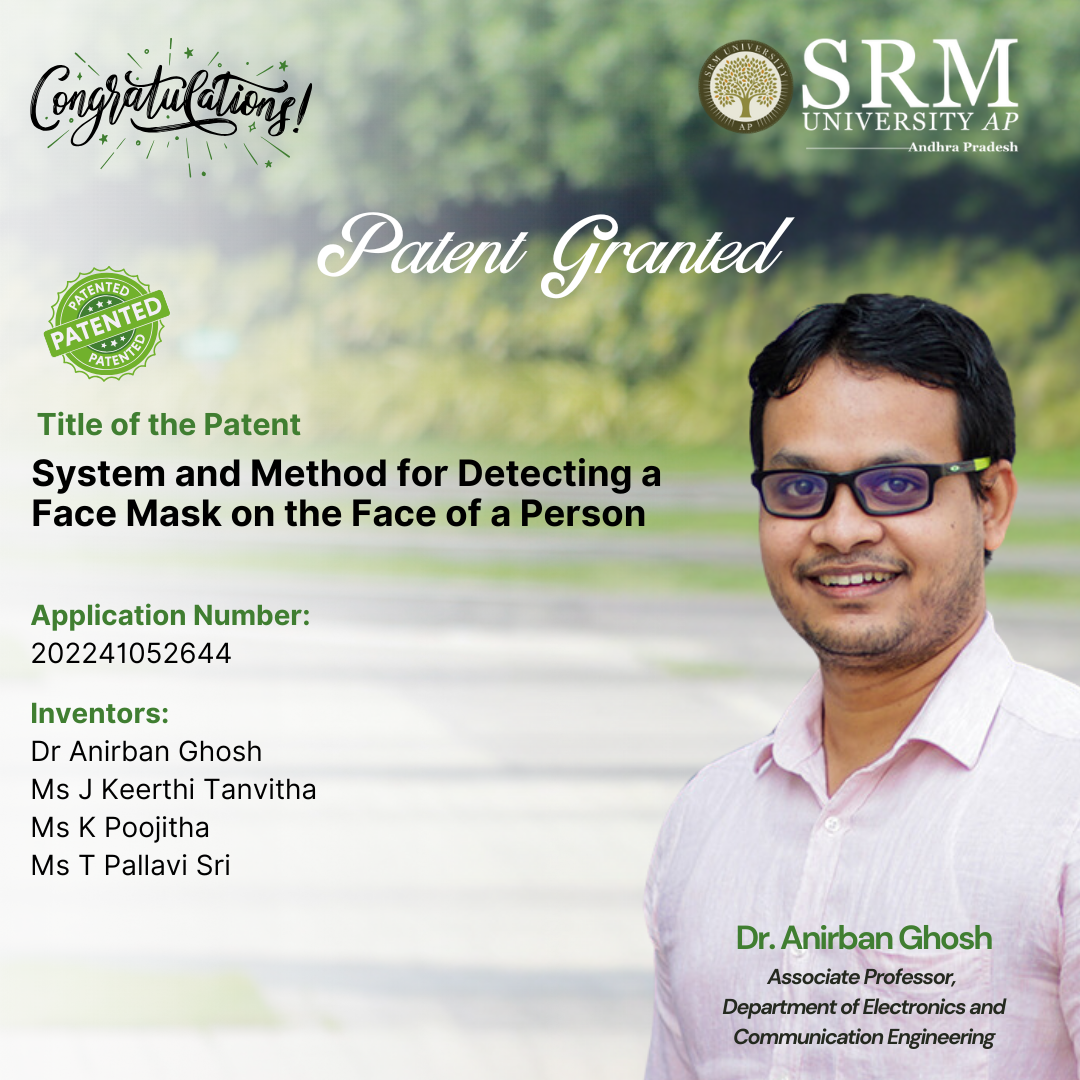 The patent titled, System and Method for Detecting a Face Mask on the Face of a Person with application number: 562697 by Assistant Professor, Dr Anirban Ghosh and his students from the department Ms J Keerthi Tanvitha, Ms K Poojitha, Ms T Pallavi Sri, has come up with a novel idea that focuses on developing a system and method for detecting face masks on individuals before they enter a gated space. Their research uses image capture, face detection, mask-wearing verification, and temperature sensing to ensure compliance with health and safety protocols.
The patent titled, System and Method for Detecting a Face Mask on the Face of a Person with application number: 562697 by Assistant Professor, Dr Anirban Ghosh and his students from the department Ms J Keerthi Tanvitha, Ms K Poojitha, Ms T Pallavi Sri, has come up with a novel idea that focuses on developing a system and method for detecting face masks on individuals before they enter a gated space. Their research uses image capture, face detection, mask-wearing verification, and temperature sensing to ensure compliance with health and safety protocols.Brief Abstract
The research focuses on developing a system and method for detecting face masks on individuals before they enter a gated space. The system integrates image capture, face detection, mask-wearing verification, and temperature sensing to ensure compliance with health and safety protocols. It utilizes artificial intelligence and sensor technology to determine whether a person is wearing a mask correctly and allows or denies entry based on preset criteria. The system also includes an aliveness detection module to ensure that a real person is being scanned and prevents tampering or spoofing.
Explanation in Layperson’s Terms
Imagine you are entering a building where you must wear a mask and have your temperature checked. Instead of a security guard manually checking each person, this system does it automatically and without contact.
Here’s how it works:
- A camera captures your face as you approach the entrance.
- A software program checks if you are wearing a mask correctly (covering your nose and mouth).
- A temperature sensor scans your body temperature.
- If your mask is worn properly and your temperature is normal, the door opens and you can enter.
- If you are not wearing a mask correctly or have a high temperature, an alert is triggered, and entry is denied.
This system is especially useful in hospitals, offices, schools, airports, and malls to ensure safety without requiring human intervention.
Practical and Social Implications
This system plays a crucial role in public health by ensuring compliance with mask-wearing protocols, especially in high-traffic areas like hospitals, offices, and airports. By automating the detection process, it reduces reliance on manual checks, minimizing human error and lowering exposure risks for security personnel. Additionally, it streamlines entry procedures, preventing congestion at access points. While the technology enhances safety, it also raises concerns about privacy and data security, making it essential to implement ethical safeguards. Beyond COVID-19, this system can be adapted for future health crises requiring similar preventive measures.
Future Research Plans
Future improvements will focus on enhancing accuracy using AI to recognize different mask types and improve real-time detection. Expanding the system to include biometric health screening, such as cough detection and respiratory analysis, could make it a broader health monitoring tool. Integration with facial recognition and automated access systems will further strengthen security applications. Additionally, optimizing the system with edge computing will enable faster, more efficient processing. As the need for contactless health monitoring grows, refining this technology will ensure its continued relevance beyond COVID-19.
Continue reading → - Patent on Invisible Watermarking In Social Media Images March 26, 2025
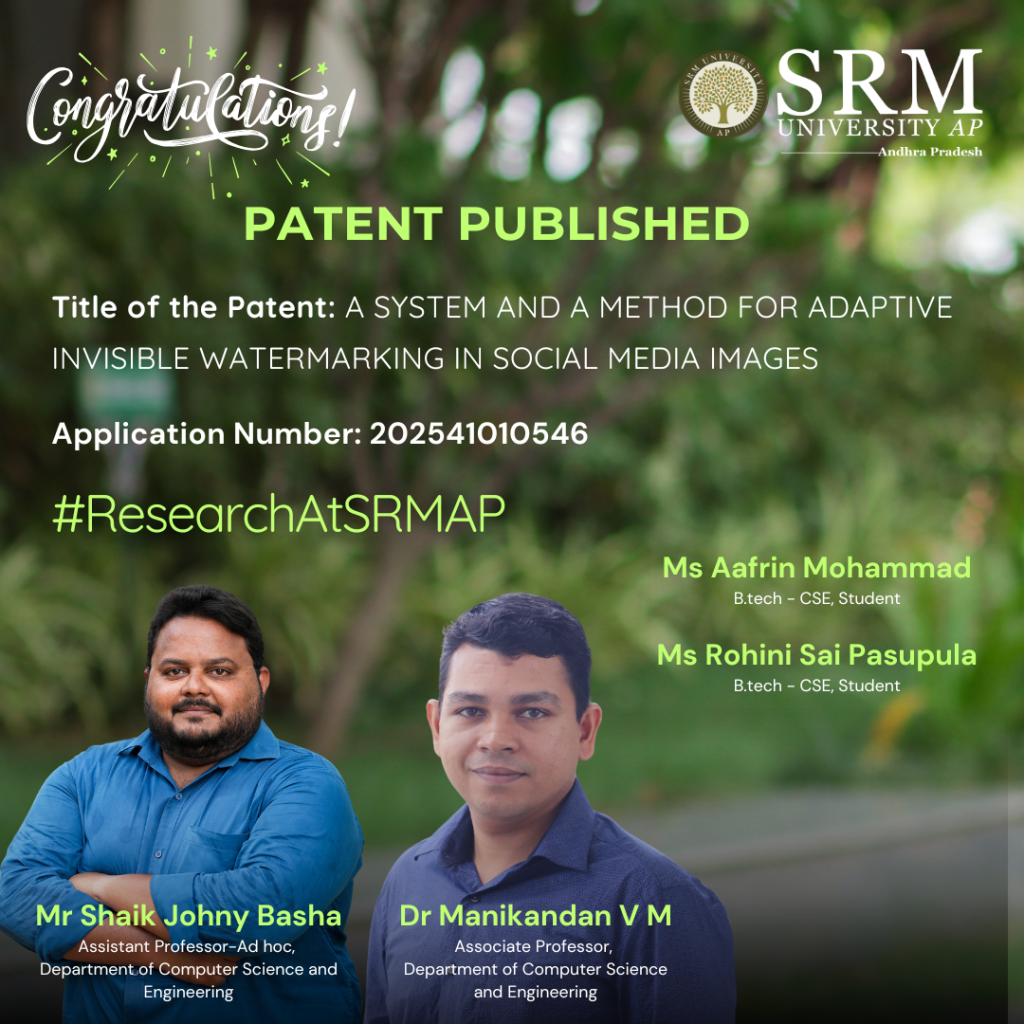 Professors, Dr Manikandan V M and Mr Shaik Johny Basha from the Department of Computer Science and Engineering along with their B.Tech. students Ms Aafrin Mohammad and Ms Rohini Sai Pasupula have published the patent titled, “A System And A Method For Adaptive Invisible Watermarking In Social Media Images.” Their patent introduces a novel method for securing photo downloads, ensuring that any unauthorised use of the images can be traced back to its original source if tampered with.
Professors, Dr Manikandan V M and Mr Shaik Johny Basha from the Department of Computer Science and Engineering along with their B.Tech. students Ms Aafrin Mohammad and Ms Rohini Sai Pasupula have published the patent titled, “A System And A Method For Adaptive Invisible Watermarking In Social Media Images.” Their patent introduces a novel method for securing photo downloads, ensuring that any unauthorised use of the images can be traced back to its original source if tampered with.Abstract:
The invention presents a System and Method for Adaptive Invisible Watermarking in Social Media Images to enhance digital privacy and copyright protection. The proposed system integrates advanced invisible watermarking technology to embed unique, imperceptible metadata into images. When users attempt to download or screenshot images from social media, the system automatically adds a hidden watermark containing identifying details such as IP address, Date, Time, and Location. This ensures that any unauthorized use of the images can be traced back to the source. By combining image processing, data encryption, and digital rights management, this system provides a robust solution for protecting online images without affecting their visible quality.
Explanation in Layperson’s Terms:
In today’s digital world, people frequently share personal photos on social media, but there is very little protection against unauthorized downloads or screenshots. Once an image is copied, there is no way to track who took it or where it is being used. Through their invention, the team solves this problem by embedding a hidden watermark in images without changing how they look. This hidden watermark automatically adds invisible information such as the IP address, location, date, and time of the user who downloads or screenshots the image. This means that if the image is misused or shared without permission, it can be traced back to the source. By combining image editing techniques, encryption, and digital security, they ensure that people’s photos remain safe and trackable online. Hence, the invention provides a new way to protect privacy and copyright while allowing users to engage freely on social media.
Practical and Social Implications:
The proposed Adaptive Invisible Watermarking System can be practically implemented using a combination of image processing algorithms, digital watermarking techniques, and cloud-based metadata storage. Below are the key steps in its real-world application:
- Integration with Social Media Platforms: The system can be embedded in social media platforms like Facebook, Instagram, X, and LinkedIn to automatically apply invisible watermarks containing metadata (IP address, timestamp, location, etc.) to uploaded images without altering their visual appearance.
- Automatic Watermarking During Downloads or Screenshots: When a user downloads or screenshots an image, the system automatically applies a second layer of invisible watermarking that includes identifying information of the downloader, ensuring every image copy has a unique identifier for traceability.
- Forensic Tracking and Copyright Protection: If an unauthorized user shares or misuses an image, the embedded watermark can be extracted using forensic tools to trace back to the original downloader, aiding in copyright enforcement, digital rights management (DRM), and legal actions against unauthorized distribution.
- Security and Privacy Features: The system can implement blockchain technology to securely log watermark data, ensuring tamper-proof verification, and provides users the option to control watermarking settings based on their privacy preferences.
- Prevention of Image Misuse and Cybercrime: The system reduces cases of identity theft, deepfake creation, and revenge porn by enabling traceability of unauthorized image usage, helping protect individuals from stalking and cyber harassment.
- Enhanced Digital Privacy and Ownership Rights: Users are empowered to maintain ownership of their photos even after sharing them on social media, encouraging ethical content sharing while discouraging unauthorized downloads.
- Impact on Content Creators and Businesses: Artists, photographers, and digital content creators can protect their work from theft or unauthorized republishing, while influencers and businesses can safeguard their brand assets and prevent content duplication.
- Legal and Ethical Implications: The system encourages social media companies to take responsibility for user content protection and supports law enforcement in tracking down offenders involved in image-based cybercrimes.
Future Research Plans:
- AI-Powered Watermarking and Deep Learning for Image Security
- Blockchain-Based Digital Rights Management (DRM) for Image Ownership
- Cross-Platform Compatibility & Social Media API Integration
Link to publication: https://search.ipindia.gov.in/IPOJournal/Journal/Patent
Continue reading →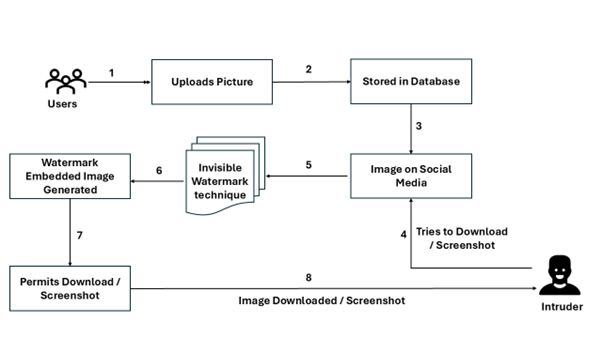
- “Democracy Unravelled” – International Conference on Exploring the South Asian Political Perspective March 26, 2025
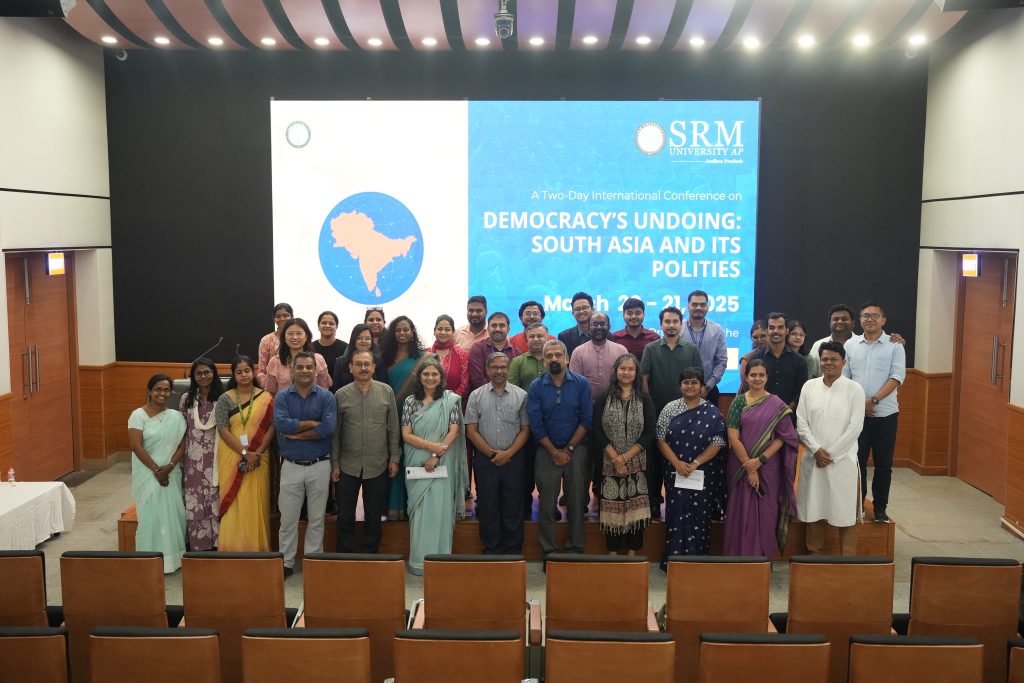
Academicians, research scholars, and social scientists from renowned institutions across the world assembled at the two-day international conference on “Democracy’s Undoing: South Asia and its Polities” hosted by SRM AP on March 20-21, 2025, to explore the pressing issues and challenges faced by various democracies in South Asia. The conference organised under the aegis of the Department of Political Science, Easwari School of Liberal Arts, explored the concept of democracy and its relevance to the current political landscape in South Asia.
Prof. Vishnupad, Dean – Easwari School of Liberal Arts set the tone for the conference in his welcome address. He deliberated on various aspects of democracy and shared the vision behind Easwari School of Liberal Arts, now home to seven vibrant departments, each oriented towards the holistic growth of its students— intellectual, emotional, and ethical. Dr Idris Hassan Bhat, Assistant Professor of the Department of Political Science and the convener of the conference, addressed the resilience of democratic ideals in South Asian nations.
Prof. Ashok Acharya, from the Department of Political Science, University of Delhi, delivered the first keynote session on the contextual explorations of liberalism. He examined liberal values and how they align with democracy in today’s complex political climate. Tracing the relationship between liberalism and democracy, Prof. Acharya stated, “The 20th century saw democracy take root as a regime, while liberalism functioned as a guiding ideology with an emphasis on liberty, self-governance, and diversity.” He elaborated on the significance of ‘dissensus’ in a liberal democratic society.
The second keynote address welcomed Dr Kurt Annen, a Professor of Economics at the University of Guelph, Ontario, Canada, who offered a global perspective on democracies. One of the central themes of the lecture was the challenge of establishing a clear causal relationship between democracy and economic growth. He also highlighted the importance of understanding the mechanisms through which democracies may foster economic development.
The conference also featured thought-provoking panel discussions, roundtable sessions, and paper presentations on various topics, ranging from Religious Nationalism and Homeland Fantasies in South Asia to the State of Minorities in South Asia to the Challenges of Inequality and Poverty to Democracy, that provided intense academic engagement and fresh perspectives for the participants and students at the Easwari School of Liberal Arts.
Continue reading →


